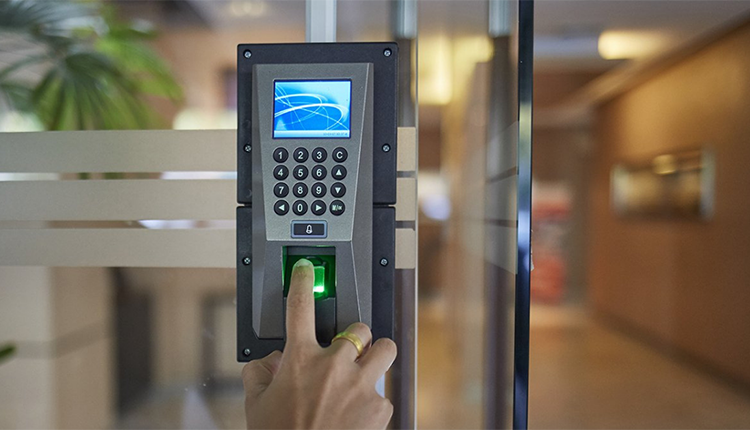The Future of Security: Checking Out the most up to date Patterns in Electronic Protection Technologies
Digital protection innovations have actually come to be progressively innovative, providing cutting-edge remedies to deal with the ever-growing obstacles dealt with by individuals and organizations alike. From biometric verification to the integration of synthetic knowledge and device discovering, these fads hold the promise of improving safety steps in unmatched methods.
Increase of Biometric Authentication
With the boosting need for safe and secure and hassle-free verification methods, the surge of biometric authentication has actually revolutionized the way individuals gain access to and secure their delicate info. Biometric authentication makes use of special organic characteristics such as fingerprints, facial features, iris patterns, voice acknowledgment, and also behavior attributes for identification confirmation. This innovation offers an extra reliable and safe method compared to traditional passwords or PINs, as biometric information is exceptionally hard to reproduce or swipe.
Among the key advantages of biometric authentication is its benefit. Individuals no longer need to bear in mind intricate passwords or fret about shedding access as a result of failed to remember qualifications. By simply making use of a component of their body for confirmation, people can promptly and securely access their devices, accounts, or physical spaces.
Furthermore, biometric verification boosts protection by offering a more durable defense against unauthorized gain access to. With biometric pens being unique to each individual, the danger of identity burglary or unapproved access is substantially minimized. This heightened degree of safety and security is specifically crucial in fields such as financing, healthcare, and government where shielding sensitive information is paramount.
Combination of AI and Device Understanding
The development of digital protection technologies, exemplified by the increase of biometric verification, has actually led the way for improvements in the combination of AI and Artificial intelligence for enhanced identification and defense mechanisms. By leveraging AI algorithms and Device Discovering designs, electronic safety and security systems can currently assess large amounts of information to discover patterns, abnormalities, and prospective risks in real-time. These modern technologies can adapt to advancing security dangers and provide proactive responses to alleviate risks properly.
One considerable application of AI and Artificial intelligence in digital security is in predictive analytics, where historical data is utilized to forecast possible safety and security breaches or cyber-attacks. This aggressive method permits safety and security systems to anticipate and stop dangers before they occur, improving total precaution. In addition, AI-powered security systems can smartly keep track of and assess video clip feeds to determine dubious tasks or people, boosting feedback times and minimizing incorrect alarm systems.
IoT and Smart Safety Instruments
Advancements in see this electronic safety modern technologies have actually led to the development of IoT and Smart Security Gadgets, reinventing the means security systems operate. The Net of Points (IoT) has actually enabled safety gadgets to be interconnected and remotely available, offering boosted surveillance and control abilities. Smart Security Tools, such as smart cameras, door locks, and movement sensors, are furnished with performances like real-time notifies, two-way interaction, and integration with various other clever home systems.
One of the considerable benefits of IoT and Smart Safety Gadgets is the capability to provide individuals with seamless accessibility to their safety systems through mobile phones or various other internet-connected gadgets. This ease permits remote tracking, arming, and disarming of safety systems from anywhere, providing read house owners with assurance and flexibility. These gadgets often incorporate sophisticated attributes like face acknowledgment, geofencing, and task pattern acknowledgment to improve total security levels.
As IoT remains to advance, the combination of man-made intelligence and artificial intelligence algorithms right into Smart Security Gadgets is expected to further boost discovery precision and customization options, making electronic security systems a lot more effective and trusted.
Cloud-Based Security Solutions
Emerging as a pivotal element of contemporary digital safety facilities, Cloud-Based Protection Solutions provide unrivaled adaptability and scalability in protecting electronic possessions. Cloud-based safety solutions make it possible for remote surveillance, real-time notifies, and systematized administration of security systems from any place with an internet link.
In addition, cloud-based security solutions provide automatic software updates and upkeep, making certain that safety and security systems are constantly updated with the most current protections versus emerging risks. Generally, cloud-based security options stand for a cost-effective and effective means for companies to improve their safety pose and secure their electronic possessions.
Focus on Cybersecurity Procedures
With the boosting sophistication of cyber hazards, companies are positioning a vital focus on boosting their cybersecurity measures. BQT Sideload locks. Read More Here As innovation advancements, so do the methods utilized by cybercriminals to breach systems and steal sensitive info. This has triggered companies to spend greatly in cybersecurity steps to shield their information, networks, and systems from harmful strikes
Among the essential trends in cybersecurity is the adoption of advanced file encryption methods to protect information both at rest and in transit. Security assists to make sure that even if information is obstructed, it continues to be unreadable and safe and secure. Furthermore, the implementation of multi-factor authentication has come to be progressively typical to include an added layer of security and verify the identifications of customers accessing sensitive information.

Conclusion
